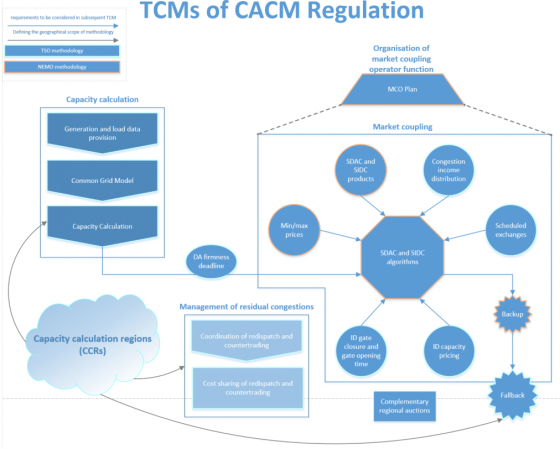Capacity allocation and congestion management
Capacity allocation and congestion management
The CACM Regulation

The Capacity Allocation and Congestion Management (CACM Regulation) provides binding rules for the implementation and operation of EU-wide single market coupling in the day-ahead and intraday timeframes.
These rules apply to Transmission System Operators (TSOs), Nominated Electricity Market Operators (NEMOs), regulatory authorities and ACER.
What are its core elements?
-
Calculation of capacities between bidding zones: capacity calculation should be coordinated among TSOs to become as efficient as possible and transparent for market participants. As a result, TSOs can provide an optimal amount of cross-zonal capacity for allocation in the market.
-
Allocation of cross-zonal capacities with market coupling: the most efficient way to allocate cross-zonal capacity is by using the Union-wide market coupling, which collects all bids and offers from the bidding zones within the European Union and maximises the economic surplus. For this purpose, NEMOs organize the day-ahead coupling as an implicit auction and the intraday coupling as continuous trading supplemented by numerous implicit auctions. The CACM Regulation also addresses the related post-coupling processes.
-
Management of residual congestions: physical congestions, which were not prevented by capacity calculation and allocation, need to be managed by coordinated TSOs’ actions - i.e. by using countertrading or re-dispatching.
-
Optimal definition of bidding zones: bidding zones are geographic areas within which electricity exchanges are unrestricted, whereas exchanges between bidding zones require cross-zonal capacity - which is limited. Bidding zones should be defined to prevent structural congestions within a bidding zone. In case the existing bidding zone configuration is not efficient, TSOs need to review the structure and propose a more efficient one.

Capacity allocation and congestion management
Documents

